Everyone of us, at some time in our life, had to deal with a painful blister. To know how to take care for a blister, first you need to know what a blister actually is, as it can prove to be very painful and problematic if you don’t know what to do about it.
Blisters happen once the epidermis, which is the upper layer of skin, is separated from the inferior layer of the skin. It can be often because of chafing or heat, but it can also happen due to some medical treatment or skin condition.
The best way to keep the bacteria away from the affected area is to avoid bursting or draining the blister, as this will protect you against any infection. However, in the case your blister bursts, it will cause pain and will be difficult to deal with.
Furthermore, you’ll have to take extra care of it. But, you don’t need to worry because knowing the following, easy steps, will make caring for blister much simpler and less painful. Keep reading to find out more.
How to Prevent Blisters
Friction could be a quite common reason for blisters to appear, particularly if they occur on your feet.
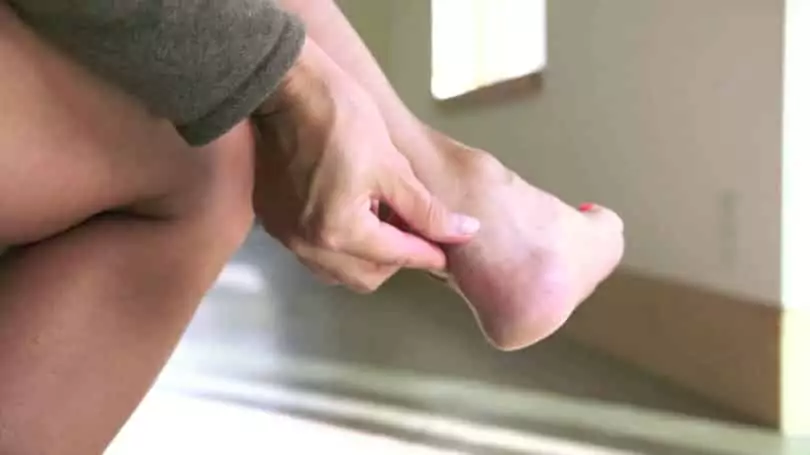
You can avoid blisters by wearing fitted shoes. Do you have new hiking boots? See our article on how to break-in your new hiking footwear to prevent blisters.
- To avoid blisters start wearing thick socks. Wearing a tights can be a second option if you can’t wear thick sock.
- Keep the skin dry, because there’s a big chance of blisters to make on the wet skin. Foot spray can be additionally used to assist cut back sweating.
- Wear gloves. Sporting gloves, particularly throughout labor like production and farming can facilitate forestall the event of hand blisters.
You should additionally wear gloves whereas doing activities like weightlifting, which may additionally cause hand blisters. Acute sunburns also can cause blisters. Shield yourself within the sun by sporting protecting wear, hats, and cream lotion. Here’s one informative piece on the best hats for winter hiking for you to read, so check out the link.
- Moisten your feet: Similar to sweating skin, dry skin is additionally additional at risk of friction. Use skin creams and lotions munificently on a everyday to take care of correct moisture.
- Choose blister-free socks: Use Cotton socks instead of synthetic socks because they are lighter, however, they can retain fluid.
- Run with glossy skin: Before running use a petrolatum or other material on your feet or use a material to cover your feet, which remains intact even when perspiration occurs.Each ways type a defend between your socks and skin.
- Wear socks and shoes that are appropriate: Smaller shoes can cause blisters below the front area of the feet and around the nails. There ought to be a thumb’s breadth of the area between the end of the toe box and the toes. The socks ought to work swimmingly, with no additional material at the front and back part of the foot.
What to Do If The Blister Bursts
Clean your hands carefully
Before you touch the affected area you need to make sure you wash your hands with a mild soap. Clean the hands for a few seconds. It will provide protection against spreading of bacteria, that can be a reason of an infection.
Cleanse the affected area methodically using warm soap and water
You should never rub the blister because it can cause the tearing of skin even more. Refrain from using alcohol, oxide, iodine as this will irritate the affected skin.
Let the blister dry off
You need to let the blister dry off if attainable, or use a towel gently.
Again, you should not rub the towel on the blister to dry it off as it can cause tearing of the skin even more.
Try to keep the flap of skin intact
Flap of the skin that shaped the highest of the affected part could ultimately come back off, however, it can still help shield the red skin beneath during the healing process.
Try to make sure that you leave the skin unbroken.
- In case the blister gets broken and you find dirt beneath the flap of skin, then in order to prevent infection and tearing of skin, you need to clean it away.
- Initially, clean the affected area thoroughly. After that in order to disinfect the scissors that you are going to be using on the blister use alcohol. Scissors can also be sterilized by putting them in water and boiling for twenty minutes.
- Dead skin needs to be clipped away carefully. Avoid clipping too near the skin which is healthy. Better to be safe than sorry.
Put on a cream or an ointment on the blister
By putting an ointment there is lesser chance of an infection to occur, which is actually a huge risk with a torn blister.

Medicine ointments and creams that are commonly available have antibacterial ointment, each of that contain polymyxin, fradicin and antibiotic.
Put a clean bandage on the blister
A normal bandage is a good option for a small blister, but if you are dealing with a big blister then you need to put on gauze pad which sticks to its place with first aid tape.
- Make sure that you use solely non-stick bandages or you can use gauze pads on an open blister.
- Hydrocolloid bandages could facilitate accelerated healing. They’ll stick to the skin, however, not to the blister.
Utilize a special bandage which is particularly designed for blisters
In case the skin on the affected area has come back away, or for the treatment of foot blisters or other sensitive space, a special bandage which is particularly made for treating blisters should be used.
- A variety of brands of special blister and cushion bandages is available,that are soft to shield sensitive skin.
Additionally, moleskin can be used on blisters, which is a tender and soft substance that always has a glue backing.
- You can cut 2 items of material a little larger than your blister. First one should be in round shape and almost the size if your blister
- Then place the item on the blister in such position that it makes a space for air on the blister. Use the other item of material on high of the primary.
- Don’t use a something like a liquid bandage because they are appropriate for cuts and laceration, and will cause more nuisance for the blister.
When doubtful, ask your pharmacist or get a subscription from a specialist for a particular recommendation.
Bandage needs to be changed regularly
It is important that the bandage is changed regularly, before it gets wet or dirty. Also, whenever you change the bandage, you need to make the whole process of cleaning and putting an ointment on it. Unless the skin heals completely, you need to keep doing the bandage.
Handling itchiness
Usually a blister is supposed to itch because of the healing process, particularly if it is permitted to dry, however, it’s vital to avoid scratching to prevent any skin harm.
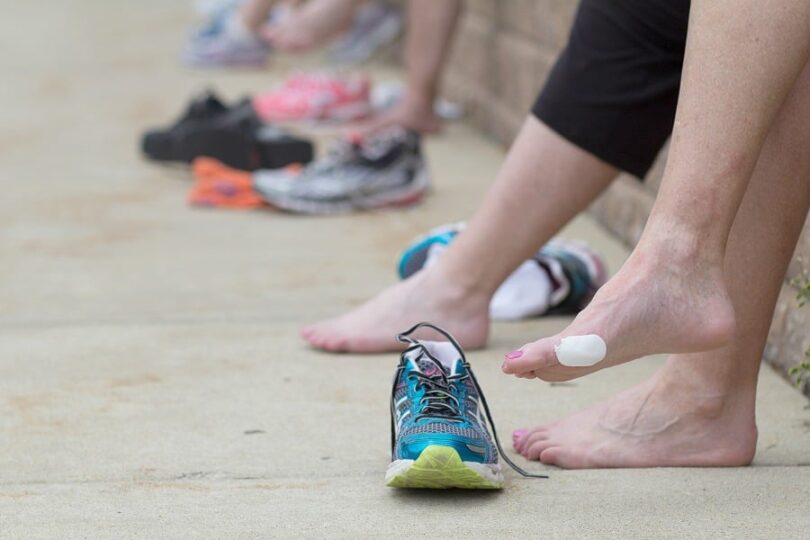
To avoid itchiness you need to keep the affected area moisturized and cool. In order to do that soak a piece of clean cotton cloth in cold water and use it on the blister, or soak the area in a cool water tub.
Eliminating the flap of skin when the healing is done
When the skin under the blister starts to heal and isn’t soft anymore, you can cut the skin flap by employing a combination of clean, modify scissors.
Look for infection signs
Open blisters will easily become infected, therefore, you need to look at them closely. In case that you see any signs of infection and in case the affected area is not recovering after a few days, obtain a specialist opinion.
Signs of infection are:
- Increased pain round the affected area.
- Redness and swelling or heat close to the wound.
- Pus debilitating from the wound
- Feeling sick
Blister Treatment
An oversized blister should be drained otherwise it can burst on its own and become very painful. Are you wondering how long your blister will heal? Then check out our piece on this topic for added information.
How to drain the blister
- First and foremost, you should clean your hands properly.
- Then sterilize a needle by wiping it with alcohol.
- Try not to place it in an exceedingly flame. Carbon particles can get into your skin. The carbon will additional aggravate the wound.
- After you have pierced the blister, rigorously deplete the fluid with your fingers by pushing mildly close to the outlet. Then cowl the area with a decent bandage to stay microorganism since moving into.
- Take the bandage off sporadically and soak your foot in specific salts to put off the fluid. Once soaking, placed on a recent bandage. It’s a decent plan to apply another bandage till the skin gets tight once more.
If you’ve a tiny, low blister, you should avoid touching it . The skin protects as a covering over a disinfected surroundings.
Moreover, when the liquid quantity is tiny and you are trying to burst it, this may cause further issues by causing some bleeding. Tiny blood blisters should be left undamaged, as well. If not, there is a possibility of obtaining microorganism into your blood.
Cut an opening the scale of the area within the center of a chunk of fabric, then apply it on the affected area and apply some gauze to canopy itself.
A doctor must be consulted for the treatment of a blister under the nail. One ne’er needs to intentionally take away the toenail.
Hotspot Management
If you are being negligent regarding the prevention you may get lucky and get an early warning in the form of a hot -spot.
A hotspot is simply a burning sensation on a specific spot.
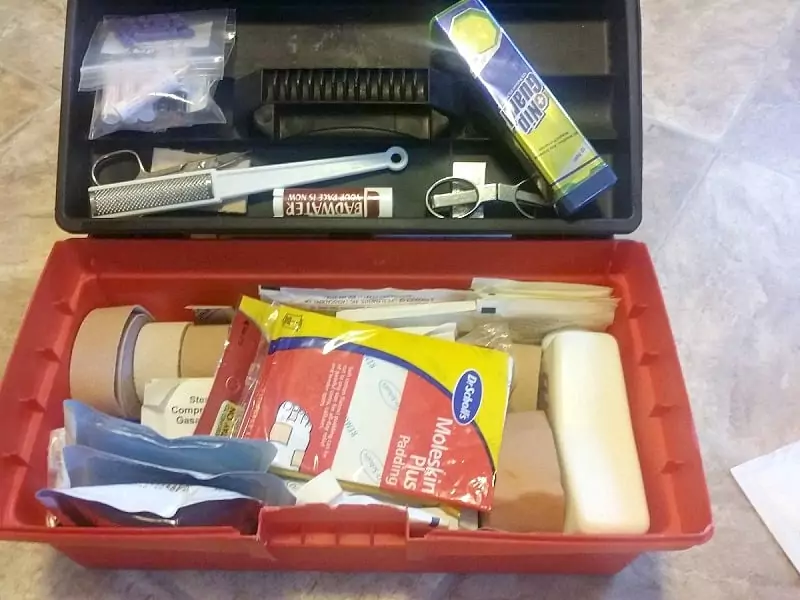
Image credit: velopress.com
Its management is just to take the prevention steps as soon as possible.
Blister kit
You should have a blister kit at home and it must contain:
- silicon gel toe sleeves.
- orthopedic felt.
- ENGO blister prevention patches.
- scissors.
- hydrocolloid dressing.
Have a home made first aid kit ready at all times. See our previous article on this DIY first aid kit that you can easily put together.
Some Useful Ways to Make A Blister Heal Faster
- Give it Air: The first and foremost rule of blisters is to let that dirty sucker breathe.By exposing the blister wound to the air speeds up the healing process. If you can’t avoid walking, do so loosely by tenting your adhesive bandage at the sides to allow air flow in the middle.
Indeed, the healthy treatment of any blister depends on whether the wound is closed or torn open. If the blister is closed, leave the skin covering the wound to prevent the possible infection.
Simply clean it with care, but leave the attached skin in place to protect the wound from dirt and infections and also to lessen the pain associated with exposed nerve endings on an open wound.
Air is important to support healing. However, if you are somewhere outdoors not in a clean environment, the use of a clean bandage or gauze pad can prevent infection.
To prevent future blisters in the same area, wear padded athletic socks or cover affected areas with a padded bandage to protect the area prone to rubbing. - Elevate, Elevate, Elevate: If you have a blister on your foot or heel, elevating it by putting up your legs will surely relieve inflammation, and pressure to the specific area and it will help decrease pain and discomfort.
Position your foot to elevate the blister as much as possible above waist height. This elevation will decrease pain, causes proper drainage of all fluids by working with gravity, and helps fresh blood flow to the area and speeds up healing. - Cushion the Injury: Some more padding on the blister can make walking more comfortable.
Sheets of foamy adhesive pads can be bought for this purpose and you can cut the shape of your required padding to fit and cushion the injury. - Soften the Area: Soak a blister a few times daily with a saline solution, especially if you pop and drain a blister.It will speed up the healing process and help flap away torn skin. It’s important to soften a blister before popping it.
Whereas, popping and draining an extremely painful blister can give pain relief by relieving pressure to the area. To try the procedure, soak blister in hot water or saline solution so you can properly clean it to prevent infection.
By softening the blister popping it with a sanitized needle will be much easier. Also, softening the area after it’s drained in warm, clean water will support speedier healing and putting less pressure and pain in the area. - Moisturize the Area: Aloe Vera is a gentle, anti-inflammatory gel that can help moisturize and speed the healing of a blister. Apply the gel after cleaning the area and allow the area to dry before covering. Aloe will also cool to the blister.
- Have Patience: Most importantly, be patient with your blister. Like any injury, it may take a few days to a week to heal completely. As advised, take the time to properly drain, clean, and dress your blister.
And if you can, leave the blister open to the air in a clean environment so that it speeds the healing process.
Wrapping It Up
These few steps will help you take care of your blister fully. When you are hiking, taking care of a blister can prove to be very difficult, so to know a few tricks can come handy and save you from the pain and trouble.
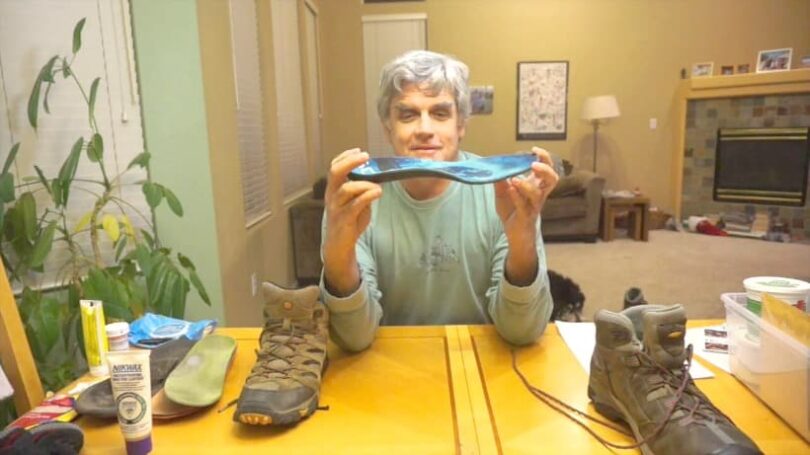
The steps that are mentioned above are very easy to follow and you can know all precautions and measures you need to take to avoid blisters in the future. By following the preventive measures and precautions you’ll be protected from blisters in the future and if you ever have to deal with a blister you will know not to panic and do what needs to done.
So you just need to know the necessary steps and tricks to deal with a blister effectively on your own which can be very helpful when you are outdoor.
We hope that you found our advices to be useful and that now you are fully equipped with knowledge to deal with blisters and make the whole experience less painful. If we missed something important, feel free to let us know in the comments section below. We are always happy to get feedback from our readers and to expand our knowledge so that our articles can become better and better. With that said, we wish you happy, blister free hiking adventures!

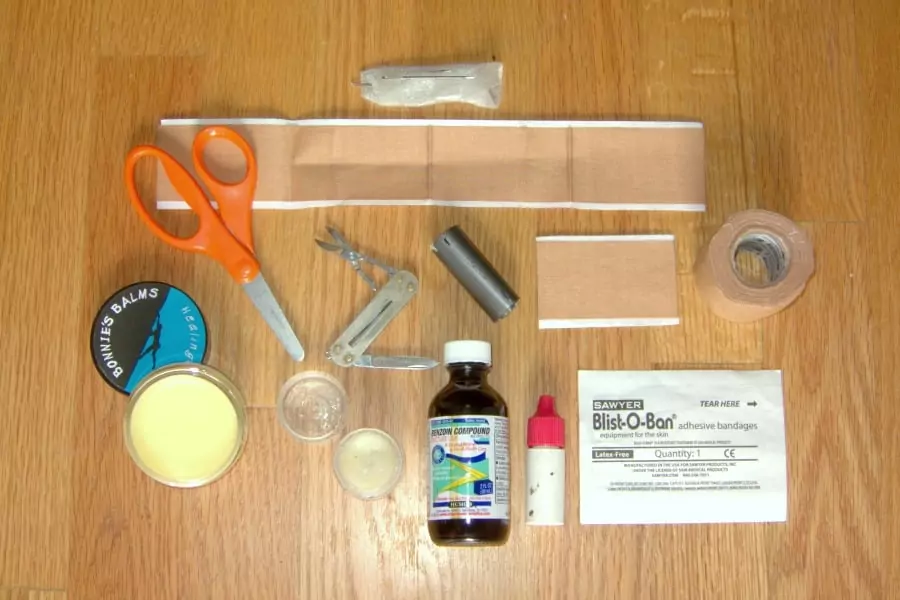
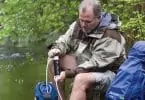
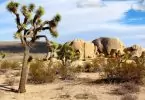
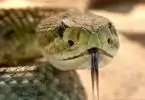

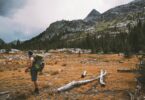

There was this one time I decided to go hiking in my new boots without breaking them in first. It was not a pleasant experience. Barely halfway through day 1, my feet started developing blisters. Good thing I had carried a pair of hiking sandals and I was able to switch and let my fit heal without slowing down.
Oh wow, that must be so painful! To prevent blisters, better wear socks to protect your feet. Also, make sure that your shoes are not ill-fitting but comfortable. Really, an ounce of prevention is really worth it!
My feet are pretty tough so I rarely get blisters but my girlfriend is the total opposite. Her feet blister so faster and always give her trouble when backpacking. She is very careful with the shoes and socks she wears but still, she suffers. Are there specific brands she should try that might give her a better chance at comfortable hiking?
Ask your girlfriend to have her shoes broken in before she use them for long hiking or trekking. Ensure that her skin is not dry – she can try putting some petroleum jelly on her feet for good measure. When choosing shoes, make sure she can wiggle her feet inside and avoid tapered tops.